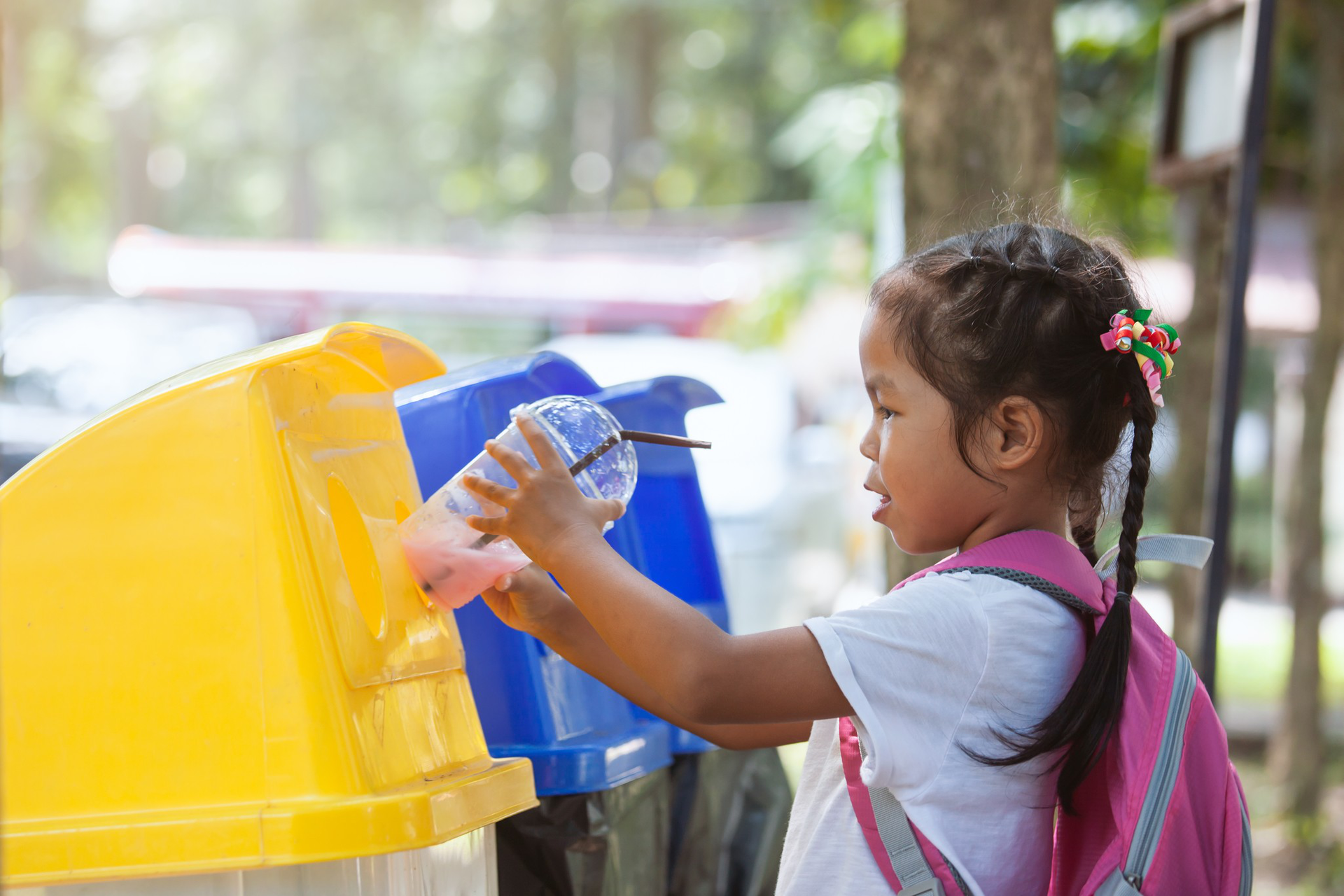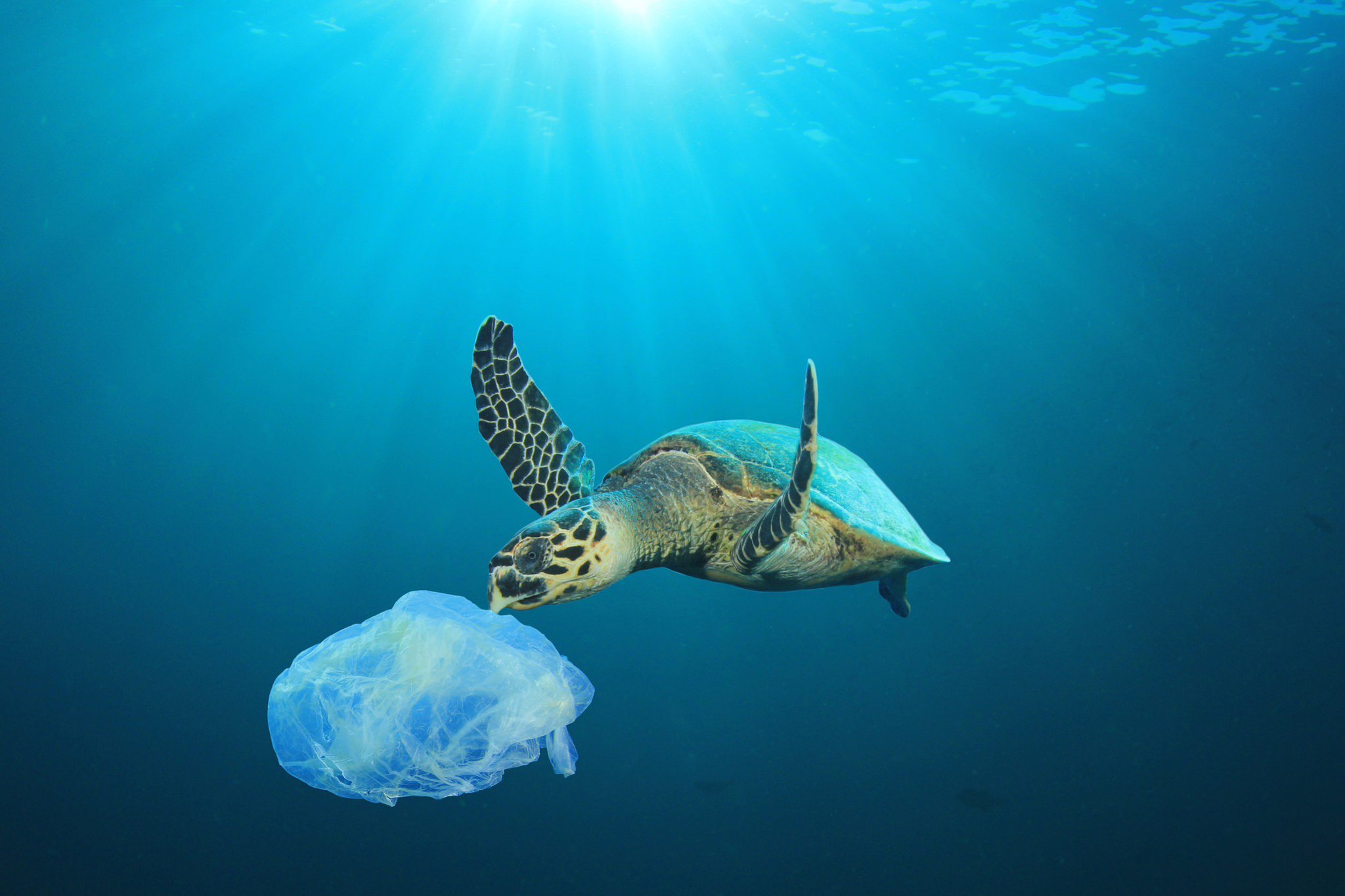Once in, it's gone forever. Mountains of waste have disappeared, new products emerge from old materials – the circular economy is set to become an important pillar of modern waste management policy. What opportunities does it offer? What advantages does it have for the plastics industry? We clarify the most important questions and concepts surrounding the circular economy.
What does circular economy (Circular Economy) mean?
More than 50 million tons of household waste are generated each year in Germany. A large part consists of valuable raw materials. In addition to metals, plastics are especially significant. Almost every product contains this material derived from crude oil. A car is made up of a quarter plastic. But furniture, cosmetics, electronic items and, above all, a multitude of packaging are also made from it. When these products reach the end of their lifespan, they often end up in incineration plants or landfills. Only a part is recycled. Quite a waste.
The circular economy aims to fully utilize all materials extracted from nature at some point, and later have them re-enter the production process as raw materials. For example: A plastic bottle is refilled as many times as possible in a functioning circular economy, then shredded – and used again as raw material to manufacture new bottles or other products. A football jersey can already be made from eight recycled PET bottles.
Many countries are tightening waste regulations to create closed systems. In this way, they want to conserve natural resources and protect the environment. An estimate by the European Parliament suggests that in a circular economy, greenhouse gas emissions can be reduced by two to four percent per year. There are also cost benefits – around 600 billion euros can be saved with the system, which corresponds to eight percent of the annual revenue of EU companies.

What does linear economy (Linear Economy) mean?
Linear economy can best be described by the word disposable society – the opposite of circular economy. The origin of this wasteful behavior lies in industrialization more than 150 years ago. At that time, people began processing raw materials in large quantities. The resulting products were sold and later simply disposed of. There was hardly any recycling. As a result, even today large amounts of valuable materials are lost. Since plastic began to spread in every area of life after World War II and burdened the environment, the disadvantages of this linear economy have become apparent. In our oceans alone, 150 million tons of garbage are floating, three quarters of which are plastics.
History of the Circular Economy
The idea of a circular economy is not new. In fact, it was the basis of human work for millennia and can still be found in some developing countries. Everything from straw to kitchen waste and excrement to the working power of animals is part of the same system. With industrialization and the ensuing rural exodus, this sustainable economic system was pushed aside.
British economist David W. Pearce introduced the modern idea of the circular economy in the 1990s. It evolved from the concept of industrial ecology. This aims to minimize the use of resources and strengthen clean technologies. In Germany, the government adopted the Circular Economy Act as early as 1994, which is intended to promote the recycling of waste. The “Cradle to Cradle” principle continues these ideas. It was developed by the German chemist Michael Braungart and the American architect William McDonough.
What forms of circular economy are there?
Seamless recycling is not yet possible today. For example, only 14 percent of all plastic packaging can be recycled.
It is true that many used materials have so far been reprocessed and recycled, but they often result in lower-quality products. This works well until the remaining components can no longer be used – which can happen after just a few uses.
Our waste cycle is therefore open (open-loop); along its course, materials are repeatedly left out and end up in the trash.
However, the trend is moving in a different direction. Researchers are working hard on new types of plastics that can be used for a long time and as frequently as possible. Their work helps to close the loop (closed-loop).

Open and closed waste cycle – where are the differences
Even in an open-loop system, materials are sorted and recycled. However, in most cases, no refinement takes place. This means that the valuable materials deteriorate each time. Plastic becomes increasingly cloudy and brittle until it is excluded from the loop. Thus, the open-loop system still creates new waste that is not recyclable. The point in time is simply further in the future. This means that the use of natural resources is extended, but the actual problem remains.
In contrast, the ideal circular economy is sustainable even in the long term. The goal is to reuse used material infinitely often without any loss of quality. This is already possible today with aluminum cans. Almost the entire material from the remnants can be used in the production of new beverage cans. Nevertheless, there are still limits to the closed-loop economy. In many recycled materials, dirt and toxins accumulate, preventing proper recycling.
Cradle to Grave
The term “Cradle to Grave” describes an economic model that so far prevails in most countries: raw materials are extracted from the earth and processed. Often, low-quality products with a short lifespan are produced from them. These quickly end up in waste incineration or on landfills. The “Cradle to Cradle” principle, however, envisages a completely different approach.
Cradle to Cradle
The term is associated with the idea that every material is the raw material for another product. This creates an eternal cycle. What is taken from nature remains a part of this system – without loss of quality. When the principle works perfectly, no waste is created. However, for the idea to succeed, several fundamental principles must be fulfilled:
All products must be manufactured in such a way that they harm neither people nor the environment. This means they can be separated into materials that are recyclable and biodegradable. Only what is simultaneously a nutrient may be produced as waste.
The steel used in a car, for example, would be recycled in a category-specific technical cycle to become a new body. The plastic used in the cockpit would be designed in such a way that it could also be used to create new products. In contrast, tires and worn seat covers would enter a biological cycle. Materials made from natural rubber or organically produced cotton would decay and could serve as fertilizer for new plants. Of course, even these biodegradable materials in the technical cycle should be recycled as frequently as possible.
The use of renewable energies, for example through wind and sun, is also a prerequisite. Emissions such as greenhouse gases or nitrogen oxides are also a form of waste. Naturally, solar panels or wind turbines would also have to be manufactured according to the “Cradle to Cradle” principle. This means that their components should, at the end of their lifecycle, either be recyclable in a category-specific manner or decay biologically without residues.
An important aspect of “Cradle to Cradle” is diversity. For uniformity makes one vulnerable – this is especially true for natural systems. One example is monocultures in agriculture, which promote pest infestations. “Cradle to Cradle” therefore stipulates that humans use their creativity to make meaningful use of biological and cultural diversity. Every product should contribute to preserving this diversity. This can occur, for example, through the use of locally available materials and material flows. In this way, the use of regional plants at their place of origin can be very effective. If they first have to be transported halfway around the globe as raw materials, that is no longer the case.
Spiral economy
The concept of a circular economy is forward-looking, but it has a weakness: It assumes clear and comprehensible material flows. However, these are rarely found in reality. Because the economy is a dynamic and very complex system, pure circular economy will remain a vision.
A more plausible idea is that of a spiral economy, which is much more aligned with the conditions of reality. The basic idea is that materials or products from individual industries can also be used under completely different conditions. One example is used packaging, which serves in various ways as raw material for new sweaters and jackets.
In the spiral economy, used products are not part of an isolated cycle; instead, they form a platform that offers an endless number of uses. Since this enables the system to maintain balance much more easily, there is much to suggest that the spiral economy is an idea with a strong chance of gaining traction in the future.
About Sesotec
As a partner of the plastics industry, Sesotec offers various solutions to meet the requirements of recyclers, plastic manufacturers and plastic processors. With sensor-based material analysis systems, sorting devices, metal separators and services, Sesotec ensures product purity. This guarantees efficiency and cost-effectiveness in the recycling, manufacturing and processing of plastics.

